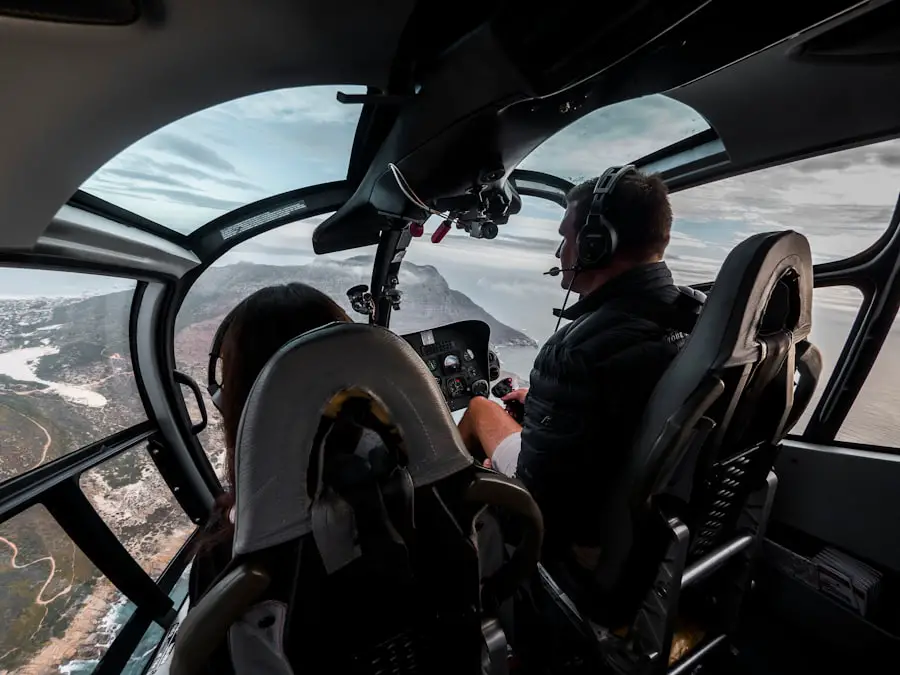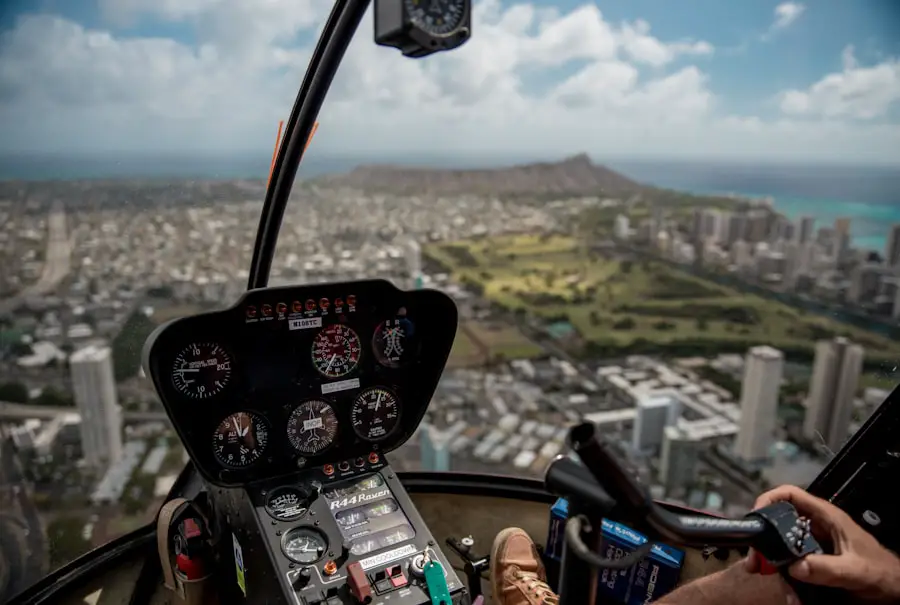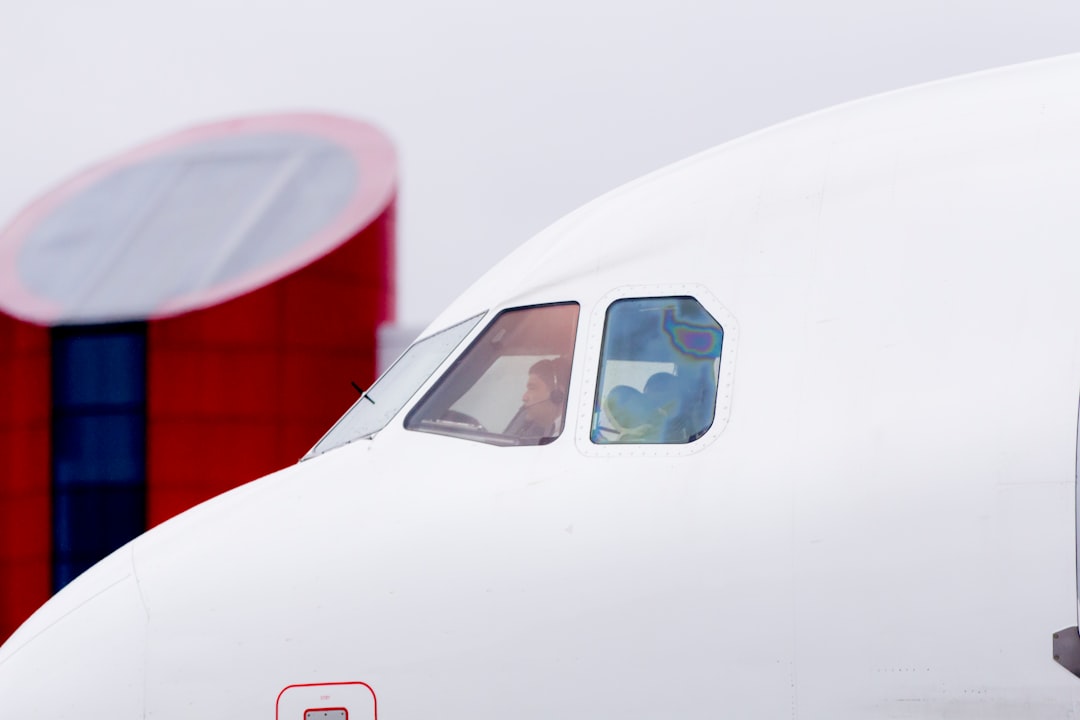The image of an airline pilot has long been associated with a specific set of characteristics: professionalism, authority, and a polished appearance. Traditionally, pilots have been seen as figures of discipline and decorum, often clad in crisp uniforms adorned with insignia that signify their rank and experience. This archetype has been so deeply ingrained in popular culture that it has created a stereotype that leaves little room for personal expression, particularly when it comes to body art like tattoos.
The prevailing notion is that tattoos are incompatible with the image of a pilot, leading to assumptions about professionalism and capability based solely on appearance. However, as society evolves, so too do the perceptions surrounding tattoos. Once considered a mark of rebellion or nonconformity, tattoos are increasingly viewed as a form of self-expression and artistry.
This shift in perspective raises important questions about how these changes impact the aviation industry, particularly regarding the hiring and acceptance of pilots who choose to adorn their bodies with ink. The juxtaposition of the traditional pilot stereotype against the modern acceptance of tattoos sets the stage for a deeper exploration of how these two worlds can coexist.
Key Takeaways
- The stereotype of airline pilots and tattoos is changing as attitudes towards body art evolve.
- Tattoos are no longer a barrier to entry for aspiring airline pilots, as the aviation industry becomes more inclusive.
- Personal stories of airline pilots with tattoos highlight the diversity within the profession and challenge traditional stereotypes.
- Diversity and inclusion play a crucial role in reshaping attitudes towards tattoos in the aviation industry.
- Airlines are adapting their policies to accommodate tattoos, recognizing the importance of embracing individuality while maintaining professionalism and safety standards.
The changing attitudes towards tattoos in the aviation industry
The Evolution of Tattoo Acceptance in Aviation
Tattoos and Professionalism: A Shift in Attitudes
In recent years, there has been a noticeable shift in attitudes towards tattoos within various professional fields, including aviation. The once rigid standards that dictated a clean-cut appearance are gradually being relaxed, reflecting broader societal changes. Many industries are beginning to recognize that personal expression does not necessarily detract from professionalism.
Challenging Traditional Beliefs
In aviation, this evolution is particularly significant as it challenges long-held beliefs about what constitutes an acceptable appearance for pilots. Airlines are increasingly acknowledging that tattoos can be a reflection of individuality rather than a sign of unprofessionalism. This change is not merely cosmetic; it represents a deeper understanding of diversity and the importance of allowing employees to express their identities.
Embracing Inclusivity
As younger generations enter the workforce, they bring with them different values and expectations regarding personal expression. This generational shift is prompting airlines to reconsider their policies and embrace a more inclusive approach to appearance standards.
The impact of tattoos on the hiring process for airline pilots

The hiring process for airline pilots has historically been stringent, with candidates often subjected to rigorous evaluations that assess their skills, experience, and overall suitability for the role.
Many airlines have maintained strict grooming standards that prohibit visible tattoos, leading to concerns among aspiring pilots about how their body art might affect their chances of employment. As attitudes towards tattoos continue to evolve, some airlines are beginning to reassess their hiring criteria. While many still uphold policies that restrict visible tattoos during work hours, there is a growing recognition that these policies may be outdated. Some airlines have started to adopt more flexible approaches, allowing pilots to cover their tattoos while in uniform or even permitting certain types of body art altogether.
This shift not only opens doors for talented individuals who may have previously been overlooked but also reflects a broader commitment to inclusivity within the aviation industry.
Personal stories of airline pilots with tattoos
| Pilot Name | Tattoo Description | Story |
|---|---|---|
| John Smith | Dragon on forearm | Got the tattoo to commemorate his first solo flight |
| Sarah Johnson | Wings on back | Received the tattoo after completing her first international flight |
| Michael Brown | Airplane on wrist | Got the tattoo to honor his grandfather who was also a pilot |
The experiences of airline pilots with tattoos provide valuable insight into the intersection of personal identity and professional life. For many pilots, their tattoos carry deep personal significance, often representing milestones, memories, or cultural heritage. One pilot might have a tattoo commemorating their first solo flight, while another may choose ink that symbolizes their family’s history or values.
These stories highlight the emotional connections individuals have with their body art and challenge the notion that tattoos are merely superficial adornments. One notable example is Captain Sarah Johnson, who has been flying for a major airline for over a decade. Johnson has several visible tattoos, including one on her forearm that depicts an intricate compass design.
For her, this tattoo serves as a reminder of her passion for exploration and adventure. Despite initial concerns about how her tattoos would be perceived by colleagues and passengers, she has found that her skills and professionalism speak louder than her appearance. Johnson’s story exemplifies how personal expression can coexist with a successful career in aviation, ultimately enriching the industry with diverse perspectives.
The role of diversity and inclusion in changing attitudes towards tattoos
Diversity and inclusion have become central themes in many industries, including aviation. As organizations strive to create environments that celebrate individuality and promote acceptance, attitudes towards tattoos are also shifting. The recognition that diverse backgrounds and experiences contribute to a richer workplace culture is prompting airlines to reevaluate their policies regarding appearance.
Inclusion initiatives often emphasize the importance of allowing employees to express themselves authentically. This includes recognizing that tattoos can be an integral part of an individual’s identity. By fostering an environment where pilots feel comfortable showcasing their body art, airlines can cultivate a sense of belonging among their workforce.
This shift not only benefits employees but also enhances the overall image of the airline as progressive and open-minded.
The importance of professionalism and safety in the aviation industry

While discussions about tattoos in aviation often center around personal expression and inclusivity, it is essential to acknowledge the industry’s unwavering commitment to professionalism and safety. Pilots are responsible for the lives of hundreds of passengers at any given time, and their appearance must convey authority and competence. This reality raises questions about how tattoos fit into the broader context of safety and professionalism.
Airlines prioritize maintaining high standards for their crews, ensuring that pilots project an image of reliability and trustworthiness. However, it is crucial to recognize that professionalism is not solely defined by appearance; it encompasses skills, training, and adherence to safety protocols. As the industry evolves, there is potential for a more nuanced understanding of professionalism—one that allows for personal expression while still upholding the highest safety standards.
How airlines are adapting their policies to accommodate tattoos
In response to changing societal norms and evolving attitudes towards tattoos, many airlines are beginning to adapt their policies regarding appearance standards for pilots. Some airlines have implemented guidelines that allow for visible tattoos as long as they are not offensive or distracting. This shift reflects a growing recognition that personal expression can coexist with professionalism in the aviation industry.
For instance, certain airlines now permit pilots to wear short-sleeved uniforms or allow them to cover their tattoos with makeup or sleeves when on duty. These adaptations not only accommodate individual preferences but also signal a commitment to inclusivity within the workplace. By embracing these changes, airlines can attract a more diverse pool of talent while fostering an environment where employees feel valued for who they are.
The cultural significance of tattoos and their acceptance in different parts of the world
Tattoos hold varying cultural significance across different regions and communities worldwide. In some cultures, body art is celebrated as a form of tradition or spiritual expression, while in others, it may carry negative connotations associated with rebellion or nonconformity. Understanding these cultural nuances is essential when discussing the acceptance of tattoos within the aviation industry.
In countries like Japan, tattoos have historically been associated with the yakuza (organized crime), leading to stigma surrounding body art in professional settings. Conversely, in places like Polynesia or among Indigenous communities in North America, tattoos are often seen as symbols of identity and heritage. As globalization continues to influence cultural exchanges, attitudes towards tattoos are becoming more fluid, prompting industries like aviation to consider these diverse perspectives when shaping their policies.
The influence of popular culture and celebrities on the perception of tattoos
Popular culture plays a significant role in shaping societal perceptions of tattoos. As celebrities increasingly embrace body art—often showcasing elaborate designs on social media—public attitudes towards tattoos have become more accepting. High-profile figures such as musicians, actors, and athletes have helped normalize tattoos by openly discussing their meanings and significance.
This cultural shift has had ripple effects across various industries, including aviation. As younger generations grow up idolizing tattooed celebrities, they may be less inclined to view body art as unprofessional or inappropriate in traditional careers like piloting. This evolving perception encourages airlines to reconsider their policies regarding appearance standards as they seek to attract talent from diverse backgrounds.
The role of social media in challenging stereotypes about airline pilots and tattoos
Social media has emerged as a powerful platform for challenging stereotypes and promoting inclusivity across various professions, including aviation. Pilots who share their experiences on platforms like Instagram or TikTok often highlight their unique journeys while showcasing their tattoos as part of their identity. These narratives help humanize pilots and break down preconceived notions about what it means to be a professional in the aviation industry.
Through hashtags like #TattooedPilots or #AviationDiversity, individuals can connect with others who share similar experiences or challenges related to body art in their careers. This online community fosters dialogue around acceptance and encourages aspiring pilots with tattoos to pursue their dreams without fear of judgment or discrimination. Social media serves as both a platform for self-expression and a tool for advocacy within the aviation community.
the future of airline pilots and tattoos in the aviation industry
As societal attitudes towards tattoos continue to evolve, so too will the landscape for airline pilots within the aviation industry. The intersection of personal expression and professionalism presents both challenges and opportunities for airlines as they navigate changing norms around appearance standards. By embracing diversity and fostering an inclusive environment where individuals can express themselves authentically, airlines can attract top talent while enhancing their overall image.
The future may see a more nuanced understanding of what it means to be a professional pilot—one that values skills and experience over rigid adherence to traditional appearance standards. As more airlines adapt their policies to accommodate visible tattoos and promote inclusivity within their ranks, the stereotype of the clean-cut pilot may gradually give way to a more diverse representation of individuals who embody both professionalism and personal expression in equal measure.
According to a recent article on TakeTravelInfo, airline pilots with tattoos may face certain restrictions when it comes to their appearance. Airlines often have strict grooming policies in place, which may include guidelines on visible tattoos. Pilots with tattoos may be required to cover them up while on duty, depending on the airline’s specific rules and regulations. This article sheds light on the challenges that pilots with tattoos may encounter in the aviation industry.
FAQs
Can airline pilots have tattoos?
Yes, airline pilots can have tattoos, but there are certain guidelines and restrictions that they must adhere to.
What are the guidelines for airline pilots with tattoos?
The guidelines for airline pilots with tattoos vary by airline, but generally, visible tattoos are not allowed. Tattoos that are offensive, discriminatory, or could be considered unprofessional are typically not permitted.
Are there any specific body parts where tattoos are not allowed for airline pilots?
Some airlines may have specific policies regarding tattoos on certain body parts, such as the face, neck, or hands. These areas are often required to be free of visible tattoos for airline pilots.
Do airline pilots need to disclose their tattoos during the hiring process?
During the hiring process, airline pilots may be required to disclose any tattoos they have and provide information about the location and nature of the tattoos.
Can airline pilots cover up their tattoos while on duty?
Yes, airline pilots are often allowed to cover up their tattoos while on duty using clothing or makeup, as long as the covering is not a distraction or safety hazard.
Are there any changes in the regulations regarding tattoos for airline pilots?
Regulations regarding tattoos for airline pilots may vary over time and between different airlines. It is important for pilots to stay informed about any changes in regulations regarding tattoos.
